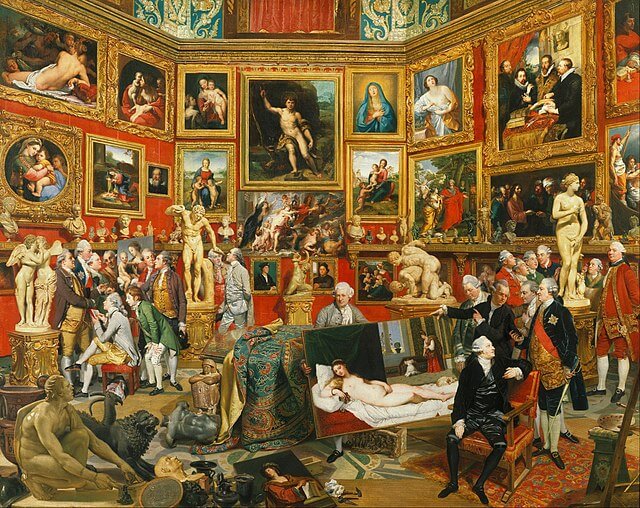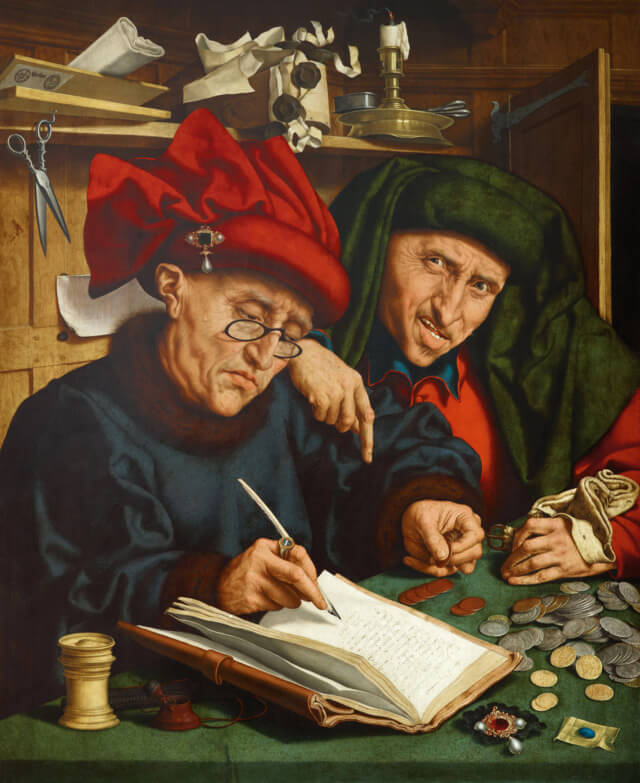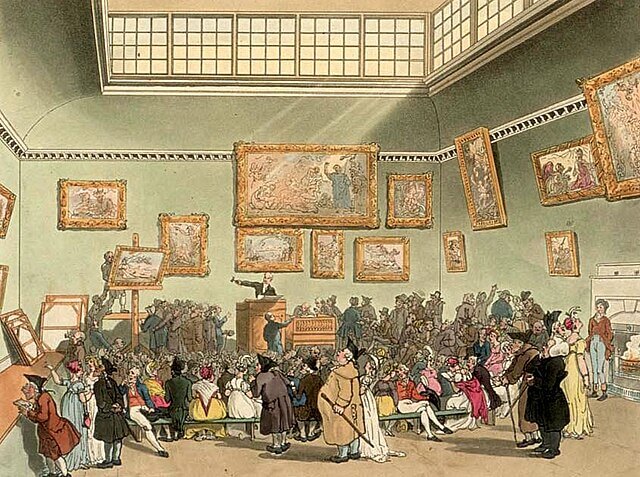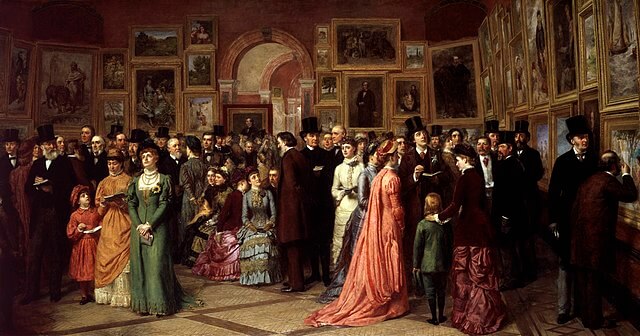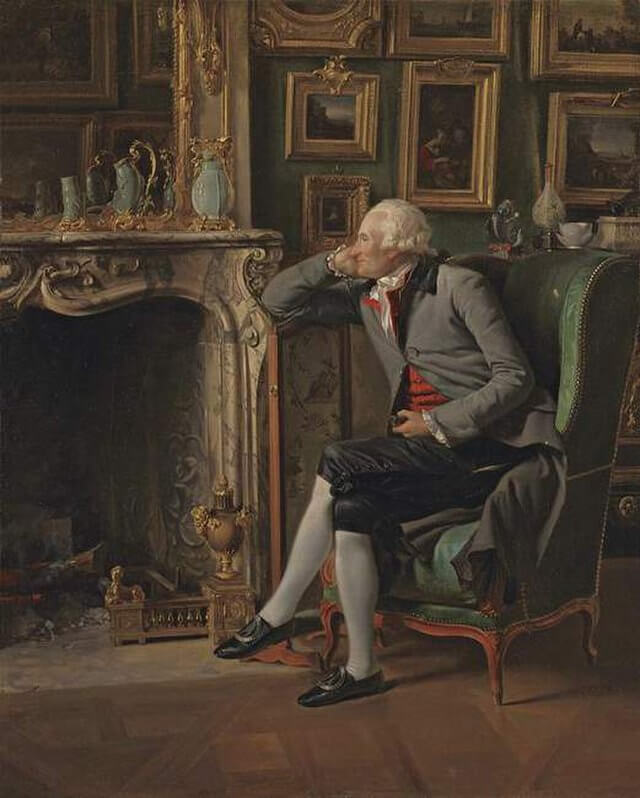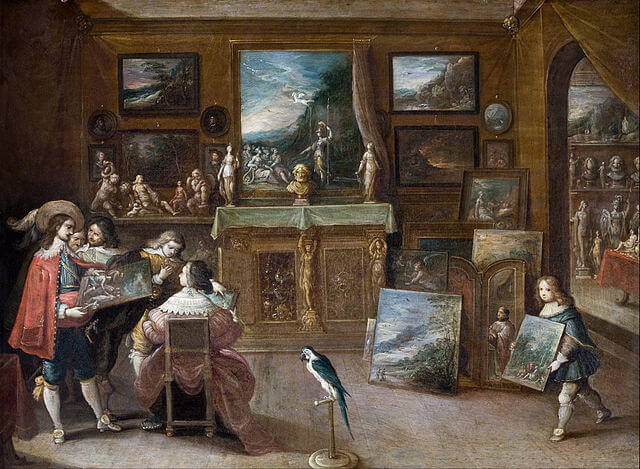To buy… or not to buy? That is often the question on our clients’ minds as they peruse the Mayfair galleries and auction houses or stroll the aisles of Frieze or TEFAF. What seems a relatively simple question must actually factor in a number of points, so here are the questions to ask yourself when it comes time to decide whether a particular artwork would make a good addition to your collection.
Johan Zoffany, The Tribuna of the Uffizi, 1772-77, The Royal Collection, UK
Do I like it…and does everyone else who will be living with it like it too?
If we had a pound for every time a client has been ready to buy something and then his or her partner arrives and fails to share the enthusiasm – let’s just say it’s not a rare occurrence. And it’s not enough to assume that a purchase will be a success because you’ve agreed on an artist to collect. What happens if you both like Van Dongen, but he prefers the nudes while she favours the clothed figures? Or maybe you find abstraction compelling while your partner finds it perplexing? And what about the kids? Those of us who collect hope to share that enthusiasm with our children, which means we want to fill the house with art they like – or at least tolerate! It can even be worth testing a potential new acquisition on the wall at home if such a thing is possible (and it often is if you’re buying from a gallery like Dickinson).
Quinten Metsys, Two tax collectors or misers in an interior, 1520, Liechtenstein Museum, Leichtenstein
Does it fit my budget?
Great art might represent a splurge, and that’s something to which we can all relate, but it should still fit your budget. And depending on the work you’re purchasing, you might need to factor in costs beyond the sticker price: lots of works found on the walls of a gallery are framed and ready to hang but what about transport? Depending on where you live (and the size of the piece!) you’ll need to get it where it needs to go, insure it for the trip, and – if it’s an international delivery – cover any import costs or taxes. Some works are sold in unrestored state, especially at auctions, and will need conservation such as a cleaning and re-varnishing in order to look their best. Others might appear to be in fine state but are sold without a frame (or, just as problematically, one you dislike or that does the work no favours) so that’s something to factor in as well. It is worth spending some time considering your budget for art – whether that’s for an entire year or a single fair – and then you will be in a position to decide how best to allocate it, and whether to go for several less-expensive pieces or one more expensive one you just can’t live without.
Thomas Rowlandson, Augustus Charles Pugin and John Bluck, Christie’s Auction Rooms, 1808, Metropolitan Museum of Art, New York
Does the price represent good value?
This is a different question to the one of whether something fits your budget. What’s the right price for a piece of art? The answer we usually give is ‘what the market can support’, which leads to the natural conclusion that artworks by trendy, popular or rare artists will cost more than pieces by those that are less popular or well-known or have fallen out of fashion. But, within that, there are numerous factors that contribute to price, including (and not limited to) condition, subject, provenance, and the demands and needs of the seller. A trustworthy dealer or auction house specialist will be able to explain and justify an asking price or estimate using comparable recent sales figures for works that are similar, hopefully helping to reassure you that you are not being overcharged. (And no one likes being overcharged, regardless of budget: we remember a discussion with one hedge fund manager whose enjoyment of a particular painting was impacted when a similar work sold just weeks later, for about a quarter the price he paid at auction. It isn’t the amount he paid that irritates him but the fact that someone else got a better deal!) If you don’t want to rely on others to do the work, a subscription to a price database such as artnet might be for you – as long as you remember that the information won’t be complete and won’t offer comparisons on factors such as condition.
William Powell Frith, A Private View at the Royal Academy, 1883, Royal Academy of Arts, London
Will it retain its value?
We’re not (and don’t pretend to be) financial advisors, and we see art as something to be lived with and enjoyed rather than bought on speculation and stored in a bonded warehouse. That said, we are also realistic in understanding that – in addition to paying a fair price – clients want to make sure art will retain its value in case they wish, or need, to sell it in the future. Our advice has always been to buy the best you can afford and the best example of a given artist’s work available – it’s much better to have the masterpiece of a lesser-known painter than a humdrum example by a more famous name. Inevitably, some artists or genres will go in and out of fashion (the recent rekindling of interest in the Pre-Raphaelites being a fine example) but you should never lose out on a good artwork, bought fairly, and kept in good condition.
Henri-Pierre Danloux, The Baron de Besenval in his Salon de Compagnie, 1791, The National Gallery, London
How does it fit in with the rest of my home and collection or the direction I see my collection taking?
People have different collecting strategies – some favour a particular period, artist or subject, while others have more of a ‘buy what catches your eye’ technique. Even if you fall into the latter camp, you’ll still want to consider how (and where!) a new piece will fit into your collection… before you arrive home with a full-length Batoni portrait only to find the ceilings of your mid-century modern home aren’t tall enough for it.
Frans Francken the Younger, A Visit to the Art Dealer, 1636, Hallwyl Museum, Stockholm
And finally… have I done my homework to ward off any potential problems down the line?
When it comes to buying art, surprises are rarely a good thing (although if you buy an anonymous Renaissance portrait and it turns out to be a Raphael, we’ll accept the exception!) You need to work closely with a gallery or advisor you trust and research things like provenance of an artwork to make sure there is clear title and no potential looming restitution claims, and to check that the appropriate and relevant expertise is in place, as well as a thorough condition report.



